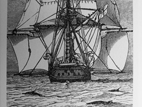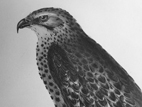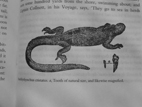Journal and Remarks
- David Gatten |
- 2009 |
- 15 minutes |
- COLOR |
- SILENT
Rental Format(s): 16mm film
JOURNAL AND REMARKS, the second reel of the ongoing Continuous Quantities series, contains 700 shots, 29 frames each, shuttling between the 1839 version of what later became Charles Darwin's A Voyage of the Beagle (1845) and images I gathered on a recent trip to the Galapagos Islands. Space and time, word and image, animal and landscape are divided and drawn together in accordance with Leonardo da Vinci's Notebook entry No. 917: "Describe the nature of Time as distinguished from the Geometrical definitions."
"Gatten's silent Bolero is ostensibly a film about evolution in which nothing changes: shots of Darwin's words are matched with present-day illustrations of them, and shots of Darwin-era drawings of animals are matched with current footage of them looking exactly the same. The tempo never quickens at the pace of 29 frames per shot. But what evolves is the style; Gatten's achieved something like a mini-history of the avant-garde. At first image-shots alternate with black frames in a slow-motion simulation of a projector starting up. Soon images alternate with images, mostly from Darwin's book. More and more these alternate with contemporary images from Gatten himself, and more and more the shots begin to move from stillness. By the end, in these single units, shots begin to dissolve together in a move from Eisensteinian dialectics to Brakhage-like synthesis: the film moves from the opposition of a drawing of a creature in 1839 Platonic form with a clip of the creature in modern-day relative form to the blurring of landscapes in the superimpositions against an unchanging sea by the film's end.
Of course such a description can't do much describing of the vibrancy of Gatten's colors nor his steady sense of meter and bar even within the unchanging rhythm of changing shots that gives the piece its percussion. A panning shot, in a sudden burst of movement, may be suspended by three still shots of the same subject from approaching distances that build on each other before resolving in another pan; images may find their double not in the following shot but minutes later as motifs first planted that eventually spring into themes all their own. But any reductive reading would lose sense of Gatten's musicality in building and balancing colors and angles and rhythms out of single words and drawings like Stravinsky or Ravel would out of single notes and phrases. Gatten tries to parse out single entities from reality only to show them linked in harmony#a filmmaker's harmony of superimpositions and matching cuts. In this glimpse of a microcosm fixed in place but dependent on movement, Gatten's real concern probably isn't evolution as much as it's eternity." - Johnny Lavant, The Auteurs







